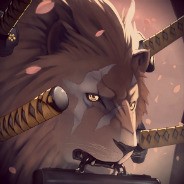ЗАДАНИЕ 1.Назовите основные проблемы, затронутые в тексте. ЗАДАНИЕ №2Скажите, на сколько частей можно условно разделить текст. Чему посвящена каждая отдельная часть?
ЗАДАНИЕ №3. Составьте 10 вопросов разных типов по тематике текста.
Прочитайте текст:
ART
Art is a diverse range of human activities and the products of those activities; this article focuses primarily on the visual arts, which includes the creation of images or objects in fields including painting, sculpture, printmaking, photography, and other visual media. Architecture is often included as one of the visual arts; however, like the decorative arts, it involves the creation of objects where the practical considerations of use are essential in a way that they are usually not for a painting, for example. Music, theatre, film, dance, and other performing arts, as well as literature, and other media such as interactive media are included in a broader definition of art or the arts. Until the 17th century, art referred to any skill or mastery and was not differentiated from crafts or sciences, but in modern usage the fine arts, where aesthetic considerations are paramount, are distinguished from acquired skills in general, and the decorative or applied arts.
Clockwise from upper left: a self-portrait from Vincent van Gogh, an African Chokwe statue, detail from the Birth of Venus by Sandro Botticelli and a Japanese Shisa lion
Art has been characterized in terms of mimesis, expression, communication of emotion, or other values. During the Romantic period, art came to be seen as a special faculty of the human mind to be classified with religion and science. Though the definition of what constitutes art is disputed and has changed over time, general descriptions mention an idea of human agency and creation through imaginative or technical skill. The nature of art, and related concepts such as creativity and interpretation, are explored in a branch of philosophy known as aesthetics.
By a broad definition of art, artistic works have existed for almost as long as humankind: from early pre-historic art to contemporary art; however, some theories restrict the concept to modern Western societies. The first and broadest sense of art is the one that has remained closest to the older Latin meaning, which roughly translates to "skill" or "craft." A few examples where this meaning proves very broad include artifact, artificial, artifice, medical arts, and military arts. However, there are many other colloquial uses of the word, all with some relation to its etymology.
20th-century Rwandan bottle. Artistic works may serve practical functions, in addition to their decorative value
Sculptures, cave paintings, rock paintings and petroglyphs from the Upper Paleolithic dating to roughly 40,000 years ago have been found, but the precise meaning of such art is often disputed because so little is known about the cultures that produced them. The oldest art objects in the world – a series of tiny, drilled snail shells about 75,000 years old – were discovered in a South African cave. Containers that may have been used to hold paints have been found dating as far back as 100,000 years.Cave painting of a horse from theLascaux caves, circa 16,000 BP
Many great traditions in art have a foundation in the art of one of the great ancient civilizations: Ancient Egypt, Mesopotamia,Persia, India, China, Ancient Greece, Rome, as well as Inca, Maya, and Olmec. Each of these centers of early civilization developed a unique and characteristic style in its art. Because of the size and duration of these civilizations, more of their art works have survived and more of their influence has been transmitted to other cultures and later times. Some also have provided the first records of how artists worked. For example, this period of Greek art saw a veneration of the human physical form and the development of equivalent skills to show musculature, poise, beauty, and anatomically correct proportions.
In Byzantine and Medieval art of the Western Middle Ages, much art focused on the expression of Biblical and religious truths, and used styles that showed the higher glory of a heavenly world, such as the use of gold in the background of paintings, or glass in mosaics or windows, which also presented figures in idealized, patterned (flat) forms. Nevertheless a classical realist tradition persisted in small Byzantine works, and realism steadily grew in the art of Catholic Europe.
Renaissance art had a greatly increased emphasis on the realistic depiction of the material world, and the place of humans in it, reflected in the corporeality of the human body, and development of a systematic method of graphical perspective to depict recession in a three-dimensional picture space.
203
295
Ответы на вопрос:
1)am
2)isn't.... Is
3)are
4)am.. Is
5)are
6)be
7)is
8) are
9)be
10)am.. Is... Are
Реши свою проблему, спроси otvet5GPT
-
Быстро
Мгновенный ответ на твой вопрос -
Точно
Бот обладает знаниями во всех сферах -
Бесплатно
Задай вопрос и получи ответ бесплатно

Популярно: Английский язык
-
Task-1. Put the words in the correct order to make the questions....
 алекс81812.01.2020 06:00
алекс81812.01.2020 06:00 -
английский, сор Earthquakes are actually more common than most people think....
 0Neder004.05.2021 03:37
0Neder004.05.2021 03:37 -
Task 2. Fill in the gaps with the past simple forms of the verbs in brackets....
 Gulya692221.05.2022 12:32
Gulya692221.05.2022 12:32 -
Почему Робин Гуд всегда убегал...
 Mmilanio04.07.2020 20:26
Mmilanio04.07.2020 20:26 -
New mail +1 How are things? You ll never guess what happened to me and my...
 tawawma07.03.2023 14:04
tawawma07.03.2023 14:04 -
Change the sentences from. Active into. Passive Vioce...
 koksenenko1016.01.2020 17:16
koksenenko1016.01.2020 17:16 -
Use of English. Task 2. Complete each sentence using who/whose/ where/when/which....
 mashadumbrava122.02.2021 05:56
mashadumbrava122.02.2021 05:56 -
Task 2. Write sentences and questions using the Present Perfect. 1. they /...
 0894f12.12.2021 15:10
0894f12.12.2021 15:10 -
Read the extract again and for questions 1-3 choose the correct answer (A,...
 миша112707.10.2020 02:29
миша112707.10.2020 02:29 -
Составьте предложение из всех данных слов...
 liliya15nafikova04.03.2023 21:58
liliya15nafikova04.03.2023 21:58

Есть вопросы?
-
Как otvet5GPT работает?
otvet5GPT использует большую языковую модель вместе с базой данных GPT для обеспечения высококачественных образовательных результатов. otvet5GPT действует как доступный академический ресурс вне класса. -
Сколько это стоит?
Проект находиться на стадии тестирования и все услуги бесплатны. -
Могу ли я использовать otvet5GPT в школе?
Конечно! Нейросеть может помочь вам делать конспекты лекций, придумывать идеи в классе и многое другое! -
В чем отличия от ChatGPT?
otvet5GPT черпает академические источники из собственной базы данных и предназначен специально для студентов. otvet5GPT также адаптируется к вашему стилю письма, предоставляя ряд образовательных инструментов, предназначенных для улучшения обучения.
